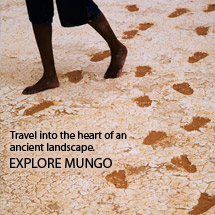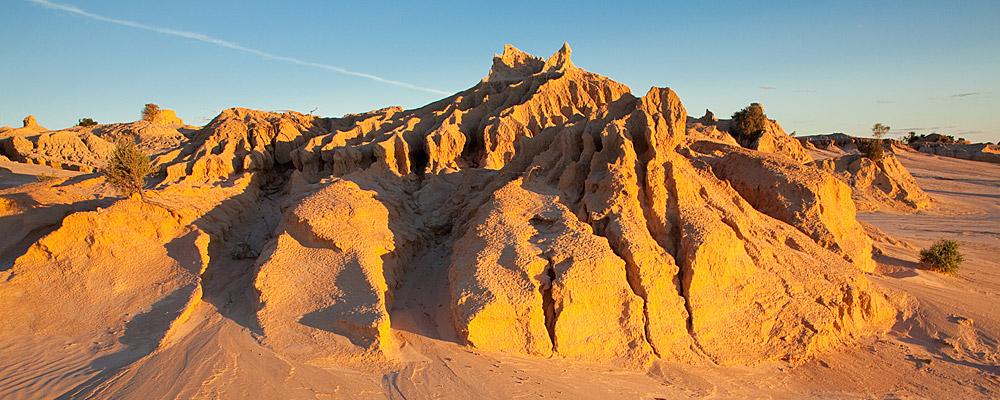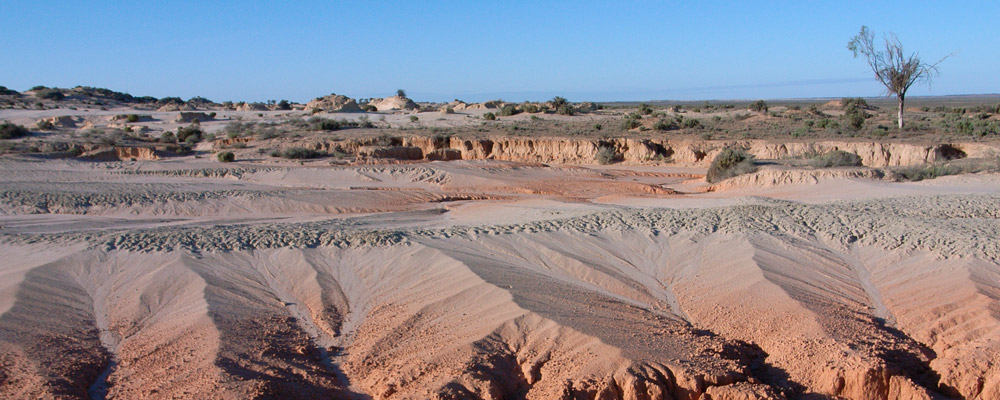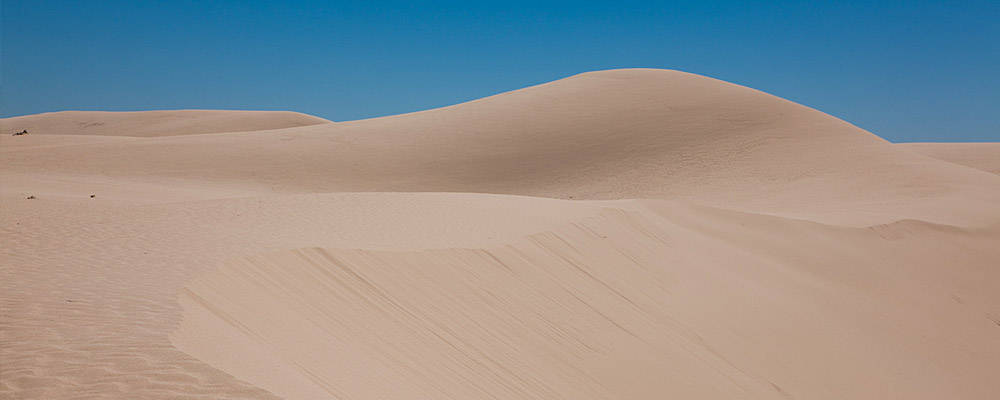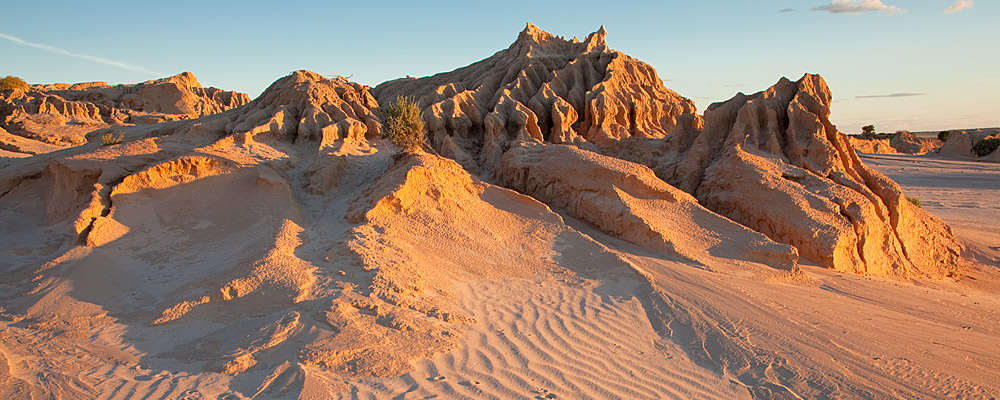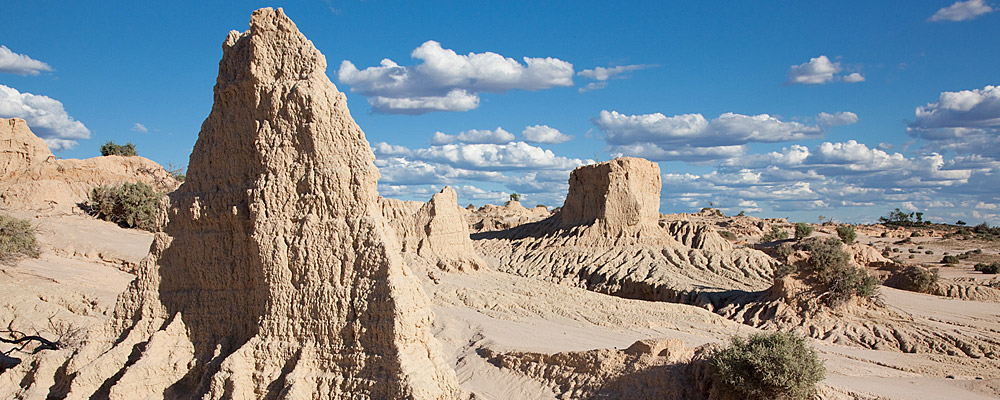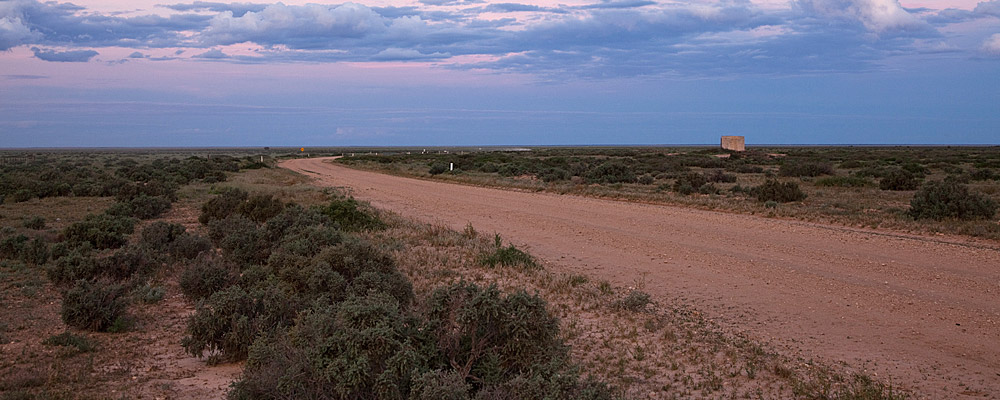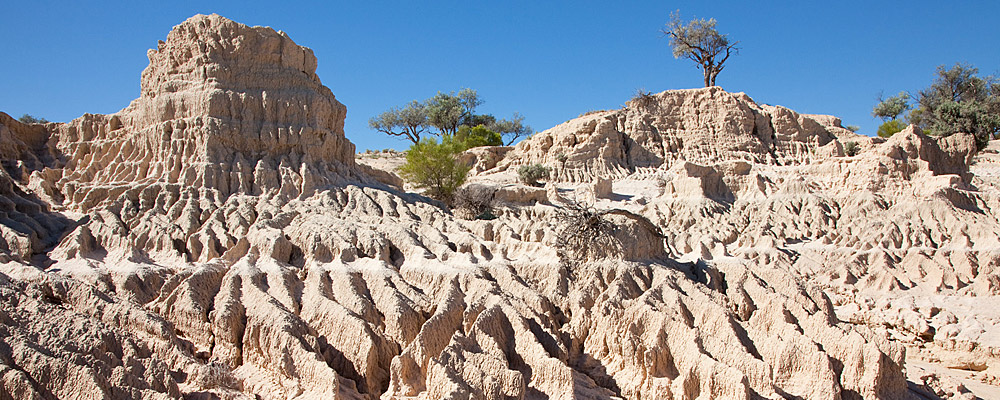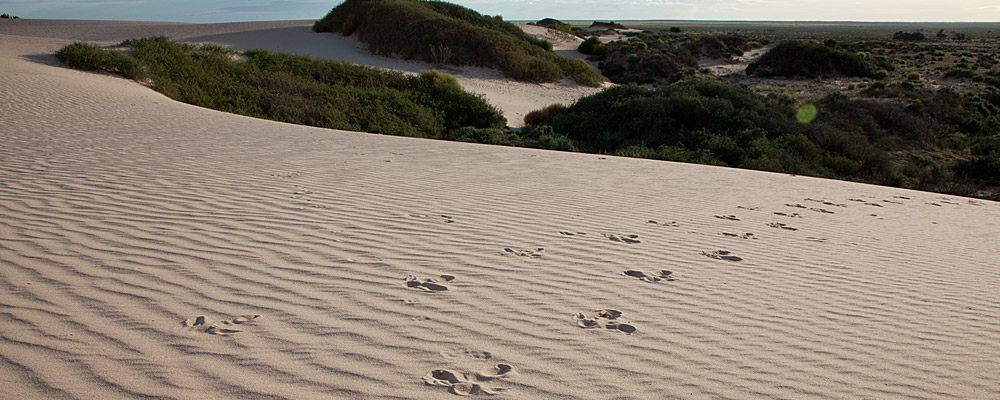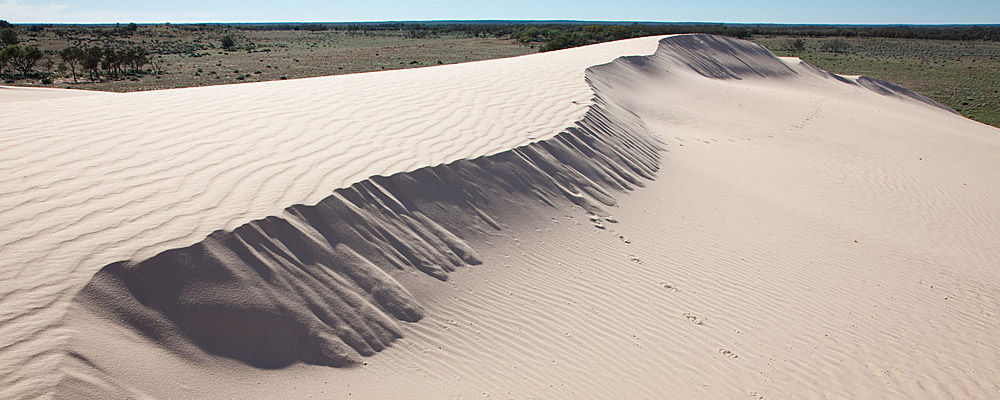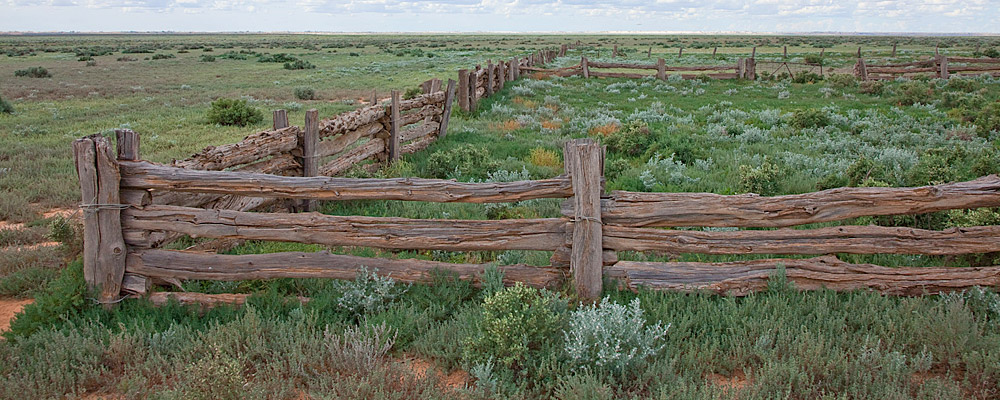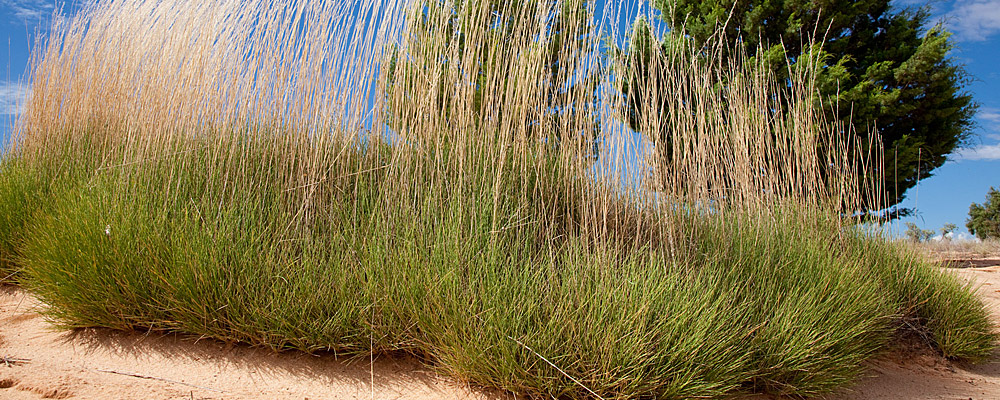Understand Mungo
World Heritage
The global importance of the Willandra Lakes was recognised in 1981 when the region was added to the World Heritage List. It was one of the first Australian World Heritage sites. By 2010 Australia had 17 world heritage places, but Willandra is one of only four that are listed for both their natural and their cultural values. The others are Uluru-Kata Tjuta National Park, the Tasmanian Wilderness and Kakadu National Park.
The World Heritage emblem
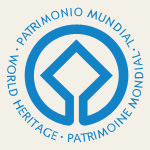
The World Heritage emblem represents the interdependence of the world's natural and cultural diversity. It is used to identify properties protected by the World Heritage Convention and inscribed on the official World Heritage List, and represents the universal values for which the Convention stands. While the central square symbolizes the results of human skill and inspiration, the circle celebrates the gifts of nature. The emblem is round, like the world, a symbol of global protection for the heritage of all humankind. Designed by Belgian artist Michel Olyff, the emblem was adopted as the official symbol of the World Heritage Convention in 1978.
The Willandra Lakes Region World Heritage Area
The Willandra Lakes Region World Heritage Area covers 2,400 square kilometres and takes in all 19 lakes of the Willandra Lakes system. It includes much of Mungo National Park and a larger area of leasehold grazing country. Parts of Mungo National Park which were added to the park after the 1981 listing are not included in the World Heritage area.
World Heritage values of Willandra
The Willandra Lakes Region was inscribed on the World Heritage List because it is of outstanding universal value according to three criteria.
- Natural:
-
as an outstanding example representing the major stages in the Earth's evolutionary history; and
as an outstanding example representing significant ongoing geological processes. - Cultural:
- bearing an exceptional testimony to a past civilisation.
(Note that the World Heritage criteria are periodically revised and the criteria against which the property was listed in 1981 are not necessarily identical to the current criteria. Also a number of additional discoveries have been made at Willandra Lakes since the area was listed, including the fossil human tracks.)
See the detailed criteria under which the Willandra Lakes Region was listed as World Heritage.
The World Heritage process
The International Convention for the Protection of the World Cultural and Natural Heritage (the World Heritage Convention) is a very successful international agreement that was established under the auspices of the United Nations in 1972. Australia was one of the first signatories in 1974, and by 2009 the convention had been signed by 189 countries. The convention requires countries to commit to the identification, protection, conservation and presentation of World Heritage sites.
The World Heritage Convention is administered by the World Heritage Committee, which is made up of 21 nations elected from the signatories to the convention. A key function of the World Heritage Committee is to consider new nominations.
To qualify for World Heritage, a place must meet specific (and quite technical) natural and/or cultural criteria, as well as associated integrity conditions (the values must be in good condition and well looked after). It's not easy to get 'over the bar'. The over-riding requirement is that places must be of 'outstanding universal value' and important to all humanity.
By 2009 there were 890 World Heritage sites around the globe. They include such precious and well known places as Mount Everest (Sagarmatha National Park), Chartres Cathedral, the Grand Canyon, Angkor, the Parthenon, South West New Zealand, the Great Wall of China and the Galapagos Islands.
World Heritage management
Under Australia's federal system, the states are responsible for land management generally and for day-to-day management of World Heritage areas. But since it is the Australian Government that is the signatory to the World Heritage Convention, World Heritage sites are usually managed under an agreement between the state and the Commonwealth.
The Willandra Lakes Region World Heritage Area includes both national park and rural grazing properties. The New South Wales National Parks and Wildlife Service (NPWS, part of the Department of Environment, Climate Change and Water) manages Mungo National Park and the leaseholders manage the grazing properties. Overall management of World Heritage values across the area is supervised by a World Heritage Management Committee which is made up of representatives of NPWS, landholders, Aboriginal traditional tribal groups, scientists and other stakeholders.
